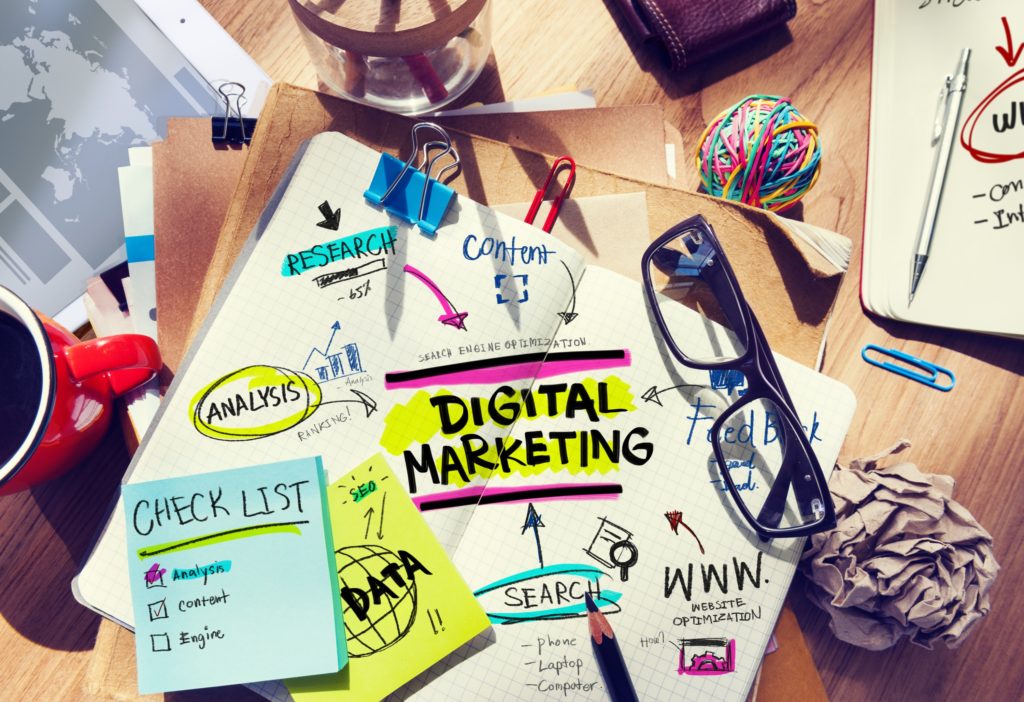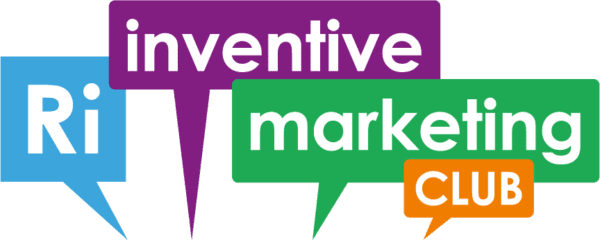You’ve graduated to the pro level well done. These tasks follow a similar format but will be suited to business already doing a bit of marketing or those who’ve completed my Foundation level.
Jump to a specific category:
- Audience & Planning
- Stats & Analytics
- Website Design & Development
- SEO & Content
- Social Media
- Email Marketing
- Business

To watch the full video and get access to all previous videos and resources join my Marketing Club - Get free access for 30 days
Audience & Planning
Review progress against business objectives
Review where you are right now and work out what changes you need to make to meet your business objectives.
Remember to congratulate yourself if you’ve done well! But don’t beat yourself up if you haven’t, just review and tweak what you are doing.
Watch IMC #11 on understanding your customer

To watch the full video and get access to all previous videos and resources join my Marketing Club - Get free access for 30 days
Compare your customer needs to your product fit
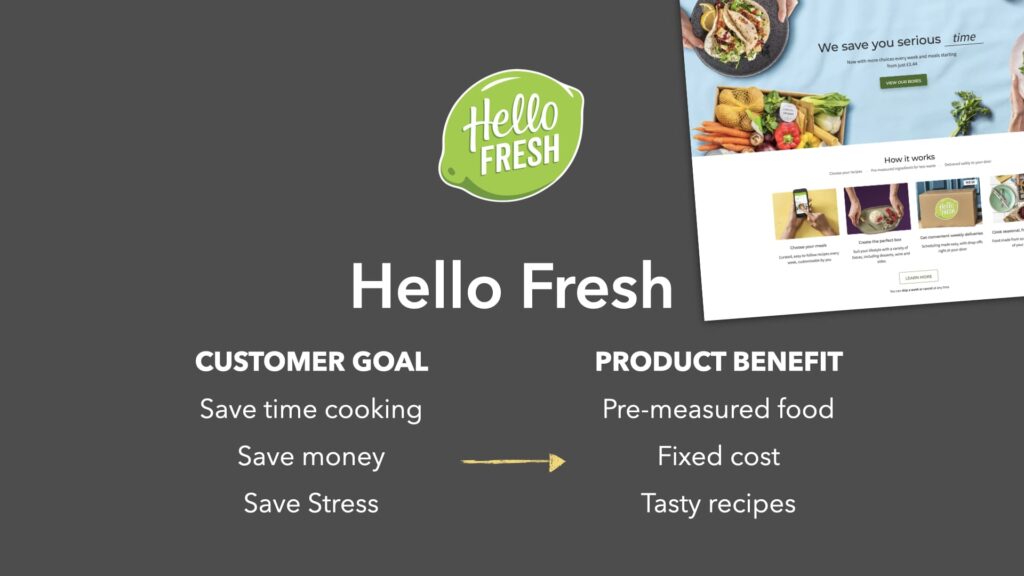
Understand how to better fulfil your customers needs with more targeted products
As a simple exercise write the top three of your customers needs or goals they want to achieve. On the other write briefly how your product benefits the customers.
Write down your customer needs for each of the three buying stages
Think about how you will attract someone to become 1. Aware of your product then 2. Consider it among the many others and then finally 3. Decide to buy from you.
1. Awareness (social activity, adverts etc)
- What attracts their attention?
- What are they interested in?
- Where do they hang out? (social, blogs etc)
- What goals to they have?
- What search terms will they use?
2. Consideration (help articles, FAQs)
- How can you help them achieve their goal?
- What else can help them achieve their goal?
- How are you aligned with their goals?
- How will they compare you?
- What questions do they have?
3. Decision (product details, checkout)
- What do they need to know to make a decision?
- What reservations do they have?
- How do they prefer to buy?
- Do they need to consult with others?
- How can you make sales process easy?
Build a customer persona
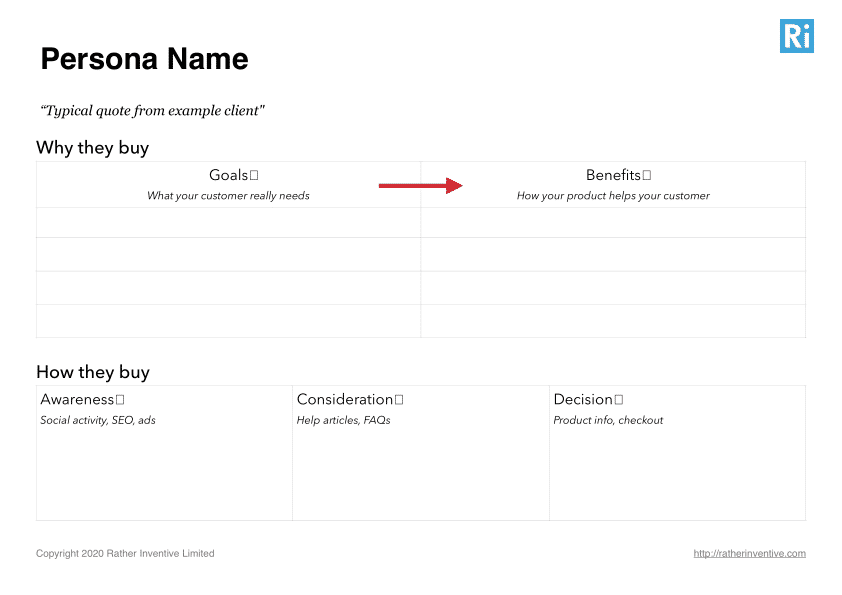
Compile your product fit, buying stages and testimonials into a single document.
Write a customer pain list of questions that you can help with
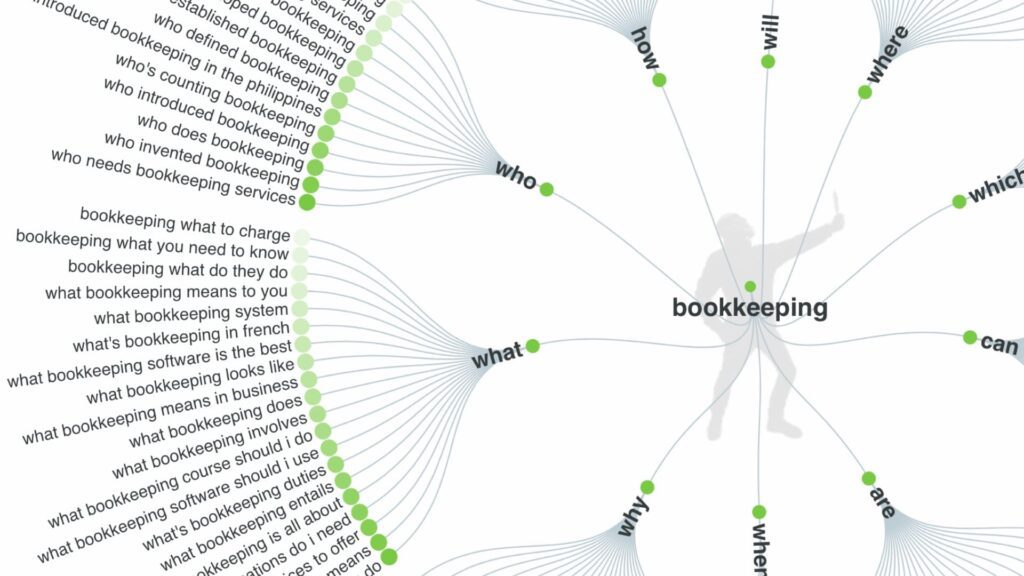
Write down at least twenty of the problems and questions your customers ask you about before they buy from you.
Here’s an example list for the keyword ‘seo’
- Why seo is important?
- What are seo backlinks?
- Wow can seo help my website?
- What are seo citations?
If you are struggling to remember you could try a fab site called Answer The Public, which can provide hundreds of questions related to just a few keywords.
Invite clients to take an online survey to get feedback
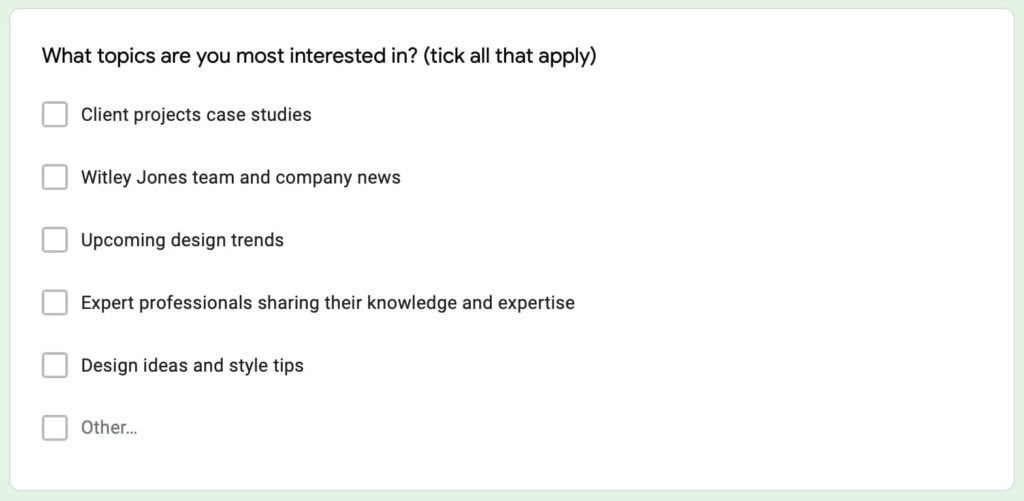
Set up a survey asking your customers for feedback on how you can improve your systems, products or marketing to help them better.
Ask open questions that will give you detailed feedback as well as simple ratings and checkboxes
It’s also worth asking how they would recommend your to a friend or colleague as this response often can become a testimonial to use on your website.
Stats & Analytics
Watch IMC #7 on how best to use Google Analytics

To watch the full video and get access to all previous videos and resources join my Marketing Club - Get free access for 30 days
Check out your stats in GA
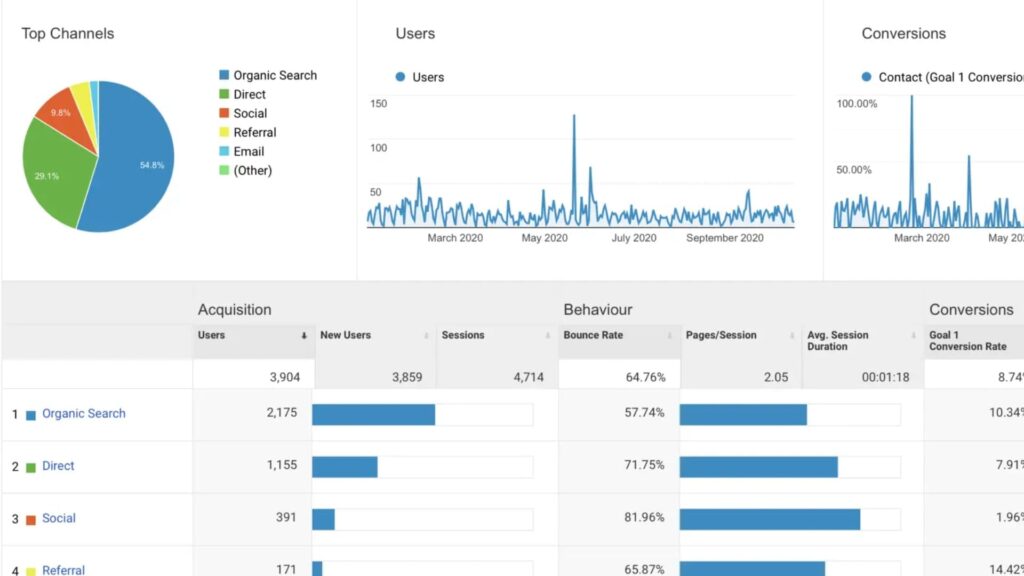
Log in to Google Analytics and take a look at the statistics. I’m most interested in the Acquisition Overview as this gives me a snapshot of where my website traffic is coming from and which ones are creating the most signups.
Decide which GA stats you need to measure to reach your objectives
Think about what numbers you need to see go up (or down).
Depending on your business you could track people who’ve requested your product or service (often known as leads), how many of them went on to buy (sales transactions), how much they spent (sales value) and how they found you in the first place (source).
It’s better to start logging just a few numbers to begin with rather than making it an arduous task to complete each month.
Here are the stats I’m interested in watching:
- Channels with most visitors and conversions
- Which landing pages people start on
- Number of sign-ups to my club
Setup GA Goals to track activity on your website
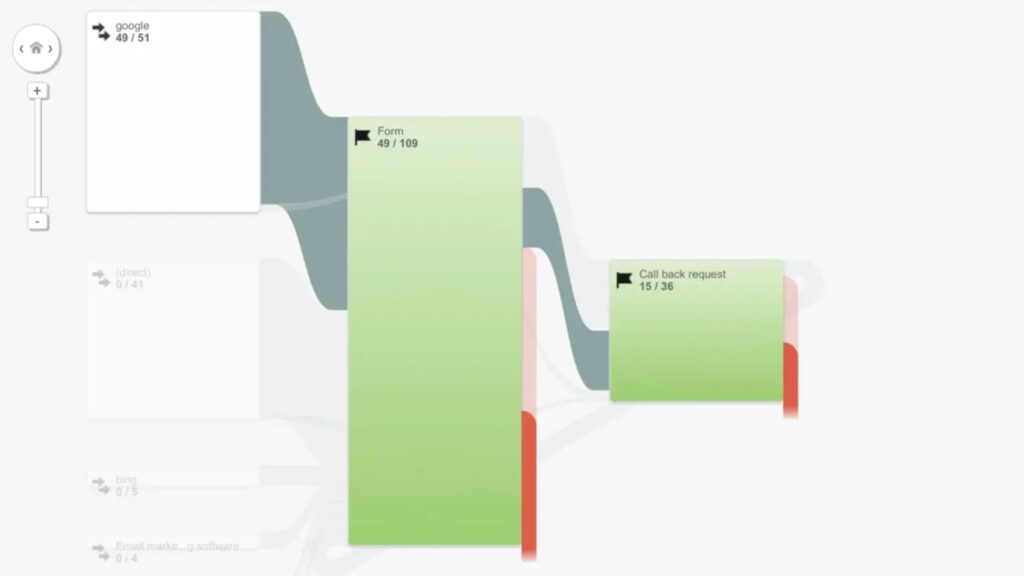
Set up Google Analytics goals to match your objectives (enquiries, sales, etc.) to measure which channels work best.
Identify one action to increase website visits
After reviewing your GA stats think about one action that you can do to increase visitor traffic.
Some actions I chosen in the past are:
- Write more blog posts based on topics that already get lots of traffic
- Add links from high traffic blog posts to key landing pages
- Share a blog post twice in the week it’s published plus a few months later as a catch-up
Website Design & Development
Grade your website and marketing (again)
Go back and re-grade your website to see if it has improved from the last test. Note any actions and improvements.
Watch IMC #8 to learn why image optimisation is important

To watch the full video and get access to all previous videos and resources join my Marketing Club - Get free access for 30 days
Reduce image size
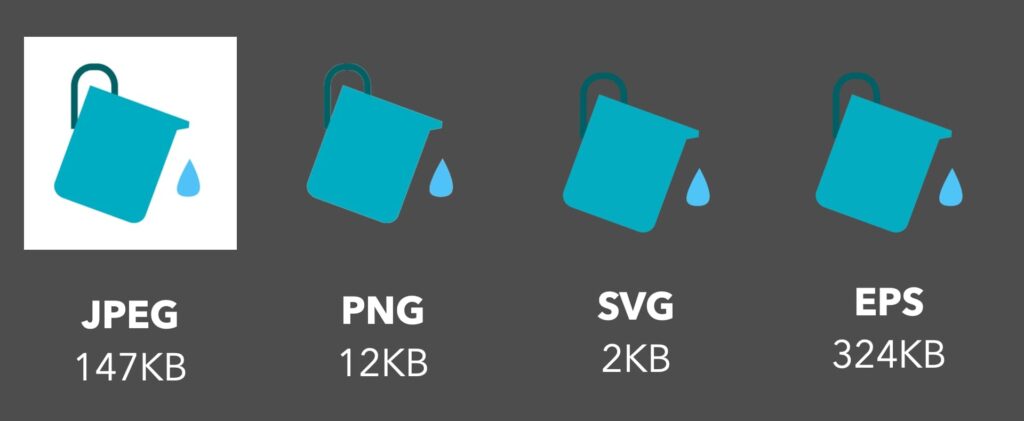
‘Images often account for most of the downloaded bytes on a page. As a result, optimizing images can often yield some of the largest byte savings and performance improvements: the fewer bytes the browser has to download, the less competition there is for the client’s bandwidth and the faster the browser can download and render content on the screen.’
developers.google.com
Using the right file format will depend on the type of image your are displaying
JPG or JPEG (Joint Photographic Experts Group)
Where possible save images in JPEG format with a compression of around 90% for hassle free results. If you have time though I recommend experimenting by lowering the compression until you strike a balance between quality and a small files size.
PNG (Portable Network Graphics)
If your image requires a transparent background you’ll need to save in PNG format. If you have options for compressing then choose 90%.
WebP
A more recent compression format from Google. Similar to PNG and JPEG, files are often 40% smaller but not in common usage yet.
SVG (Scalable Vector Graphics)
SVG files perfect for icons, drawing and logos as they will be smallest in size and can be enlarged without any loss in quality. If you have a WordPress website you’ll need to install the Safe SVG plugin to allow you to upload and display SVG files.
Two online tools you can use are compressnow.com and tinypng.com but I prefer the free Mac app ImageOptim which compresses JPEG and PNG files very quickly just by dragging the files to the program.
Remove unused plugins or add-ons
If you are using WordPress, removing plugins that are no longer in use can often make a dramatic difference to the speed of your website and may also also reduce the number of potential vulnerabilities.
For example; I removed a rotating Tweets plugin from a WordPress site I was optimising which reduced the load time by 4 seconds!
Tip: Don’t delete the unused plugins straight away, leave them deactivated for a few weeks just to make sure you don’t need them.
Add a blog or news page to your website
Add a blog or news page to your website if one does not already exist.
Ensure your website navigation is clear and simple
Review your website structure and menu to make sure it is easy for visitors (your personas) to find the information they want.
Remember that customers will want to find information fast.
Audit your page content to ensure information is current
Review the main landing pages of your site to check that all the information for each product/service is correct, up to date and easy to read.
Make sure your website has a Call To Action
Make sure you have a Call To Action (CTA) on every page of you website.
Every article should ask your reader to do something. It could be to read another article, but he product in question or signup for a service that will help fix the problem you are writing about. Consider CTAs as signposts to the next step of learning or involvement rather than pushy sales messages
SEO & Content
Watch IMC #6 on SEO tips and strategy

To watch the full video and get access to all previous videos and resources join my Marketing Club - Get free access for 30 days
Research competitor sites on Google
Search Google for your primary keyword and review the top 3 competitor’s websites to find out what they do well.
Pay attention to the the words they use in the title, URL, header and main content. Do they match the keyword exactly?
Write a blog article that answers a question from your customer pain list
Write or outsource a blog post of at least 500 words that answers one of the problems or questions from your customers.
Check that your site’s page titles clearly relate to the page content
Check all the page titles on the site for accuracy, relevance and length.
Dos
- Be Specific – Describe what the page is about
- Be Unique – Every page should have a purpose
- Be Compelling – Compel people to click on your search result
Don’ts
- Be Repetitive – Titles shouldn’t include multiple variations of similar keyword phrases.
- Be Long – Anything more than 70 characters is a waste
- Put Your Company Name at the Front – Unless it’s your home page
Create unique descriptions for each page
Create accurate and unique meta descriptions for each page on the website using your primary keywords and customer personas.
Meta descriptions shown in Google search results often help ‘convert’ a search into a click as they give you an opportunity to ‘sell’ the page to the user.
Watch IMC #16 on Improve landing page SEO

To watch the full video and get access to all previous videos and resources join my Marketing Club - Get free access for 30 days
Create a landing page for each keyword
If you want to succeed at SEO, create a page on a keyword that is 10x better than your competition in search results.
Moz.com
Check that you have a page for each primary keyword and if not, set one up and promote it.
Make sure you include the following on every landing page:
- Keyword in title, description and heading
- Keyword variations in the content
- Mixed content. Use text, video, lists, FAQs and images
- Avoid ‘thin’ content, at least 1000 word.Write enough content to create the best page on the subject
- Write for people not search engines
- Ask for action – Click, Signup, Find out more
Listen to Greg talk about SEO and affiliate marketing
Greg Jeffries, who has a ton of experience in affiliate marketing, shares some of the ways he uses SEO to generate income.
Write two blog posts
Add two new blog or news posts to your website. Remember to keep your keywords and customers in mind.
Get listed on Yell.com
Add your business to the Yell.com website directory.
Social Media
Watch IMC #4 on reviewing your LinkedIn profile

To watch the full video and get access to all previous videos and resources join my Marketing Club - Get free access for 30 days
Add business website links to your LinkedIn profile
Add your business website links to your Linkedin profile to make it easy for potential customers to reach you.
Endorse 3 people on LinkedIn
Endorse people you know do a good job with a genuine recommendation on Linkedin.
Send LinkedIn connection invites to people you met recently
Send a personally worded invite to connect to every potential customer you met at a recent event.
Watch IMC #12 for tips and advice on Google My Business

To watch the full video and get access to all previous videos and resources join my Marketing Club - Get free access for 30 days
Optimise your Google My Business profile
Improve your visibility in local search and Google maps by making sure your My Business page is up to date.
Business Name
Check that your business name reflects what you do. If you have the opportunity to include a related keyword in the title then you should do so.
Address
Particularly important if you are a store or business which people visit. Make sure the address is correct and that the map pin points to your front door.
Primary Category
This does affect your ranking position in Google Maps so it’s important. You must select one primary category, which is shown on your profile. You can also select more categories to further describe your business.
Reviews
Try to get at least 5 reviews against your page. To make it easier for people to get to the correct location to review you create a review link and send this to them.
- Whitespark’s Guide to Optimising My Business
- Ask an expert to help optimise your local search profile
Ask customers to write a Google review
Ask customers who you trust to be genuine to review your website on Google or Facebook.
Connect with target clients on LinkedIn
Use Linkedin search to find a potential client and invite them to connect with a personal message.
Set up a business Twitter account
Set up a business Twitter account and add your branding to the page.
Participate in a local networking hour on Twitter
Share your content and links on Twitter during a peak networking period if one for your local area exists.
Set up a business Facebook Page
Set up a business Facebook page and add your company details and branding to the page.
Watch IMC #2 Using email marketing effectively

To watch the full video and get access to all previous videos and resources join my Marketing Club - Get free access for 30 days
Setup an email newsletter service
Create an account with Mailchimp or Campaign Monitor so you can start sending your leads useful information so they don’t loose touch with you.
Email is a core part of my marketing strategy. Not only does it reach people who are aren’t always on a social network but it can become another touch point.
‘Email marketing is a popular strategy that more and more businesses are using to drum up interest for their brand. Sending regular communications to your target demographic is not only cost-effective, but easy to do too, so here are some of the best email marketing strategies to use in 2020.’
Isabella Goode
Collect email addresses from visitors to your site
Add an email sign up form to your website and start collecting information from prospects.
Review your email strategy
Streamline your list
Send your email only to those who want to hear from you and remove those who don’t.
Personalise
Use that personalisation button to ensure the recipient feels that the email is for him or his business.
Avoid clickbait
Manage readers’ expectations by providing good quality content that is truthful to the subject line.
Have purpose
Ensure you have a clear and concise goal for your email and make sure it’s clearly laid out.
Build trust
Deliver good quality content that will get your recipients buying your goods and services, and sharing your message.
Business
Create a spreadsheet to track your leads
Create a spreadsheet with all the details of your prospective leads including name, email, interests, source and last contact.
Listen to Rocky Romanella business leadership development
Rocky Romanella, has over 40 years experience in retail, franchising and leadership development and has a few stories to tell which he shares with me in this interview.
Watch IMC #13 Productivity at work

To watch the full video and get access to all previous videos and resources join my Marketing Club - Get free access for 30 days
Review your sales process from initial lead enquiry to final invoice
Run through each step of your sales process from when a potential customer contacts you through to your final contact with them.
Think about the following:
- Can you make the process quicker and easier for your new customer?
- Can you give them a better product than they were expecting?
- Can you help you customer to stay in touch so they can easily buy again?
- What can you do to automate or delegate the process?
Pro stage complete 🎉
Hooray! By now you should be starting to get more exposure for your business.
Next, let’s keep up the good work and maintain your momentum.

